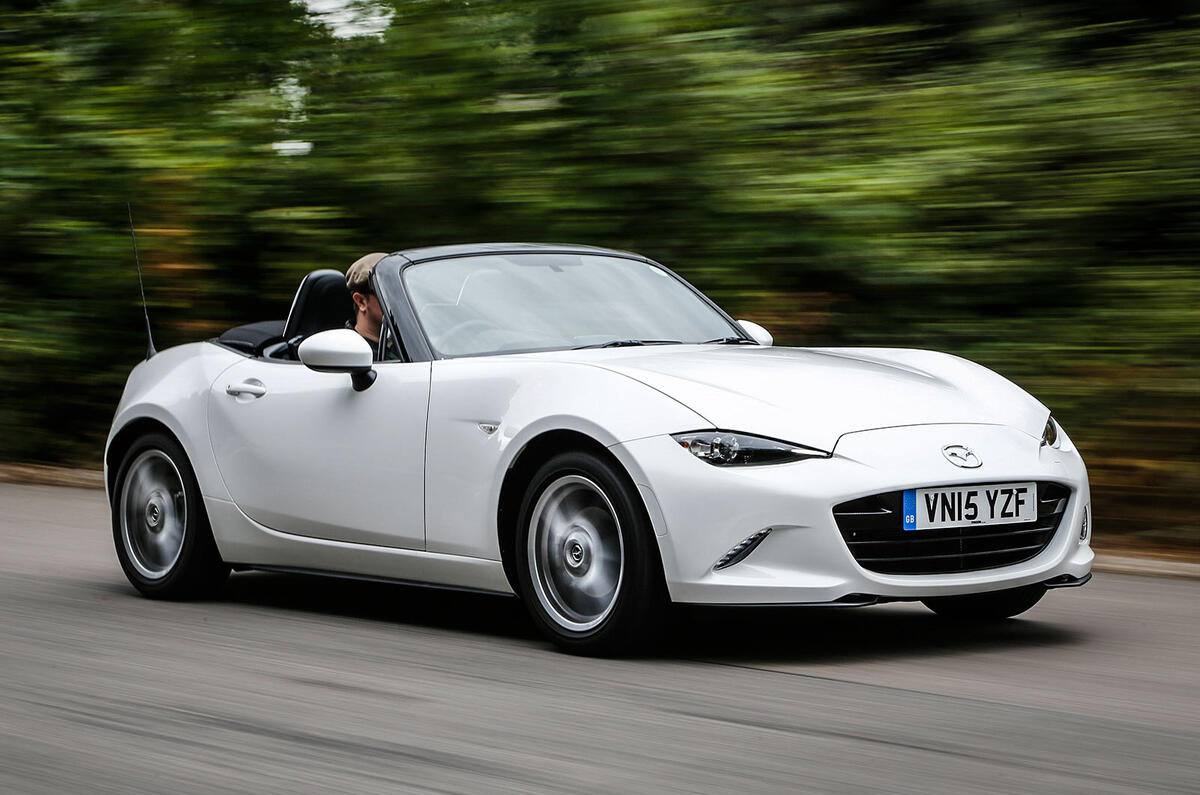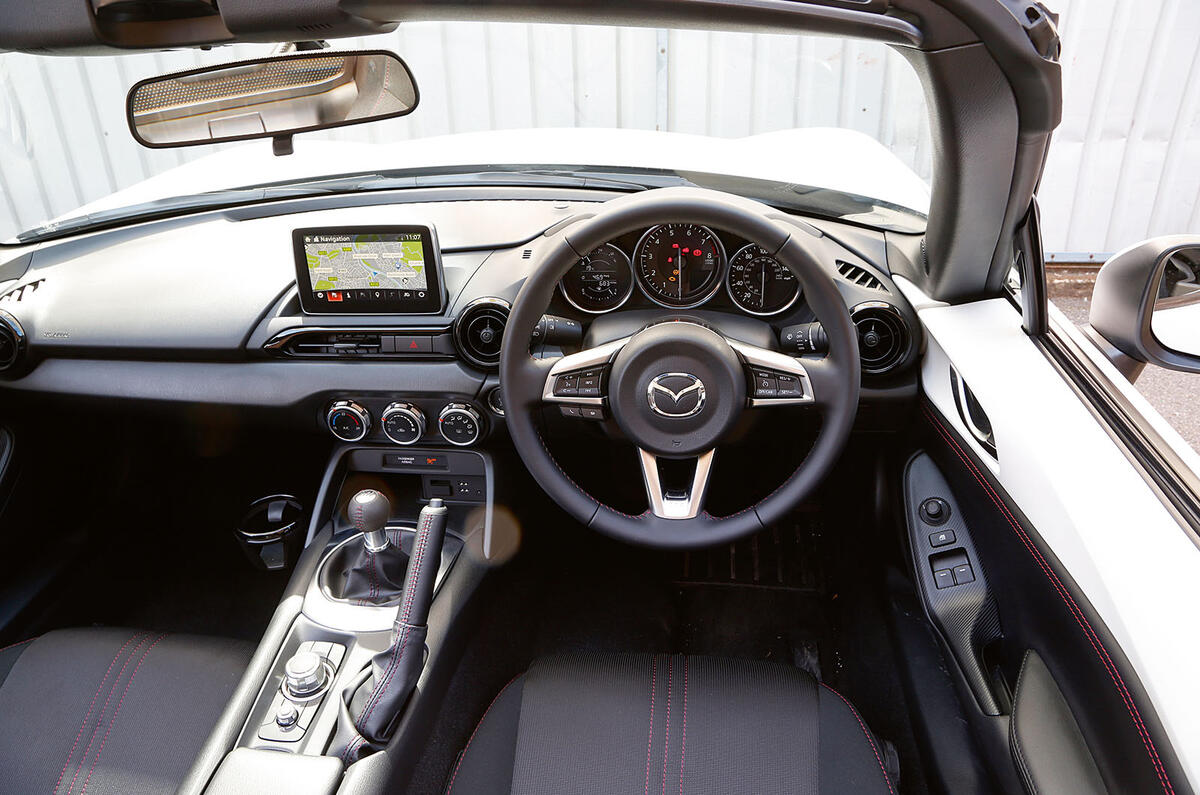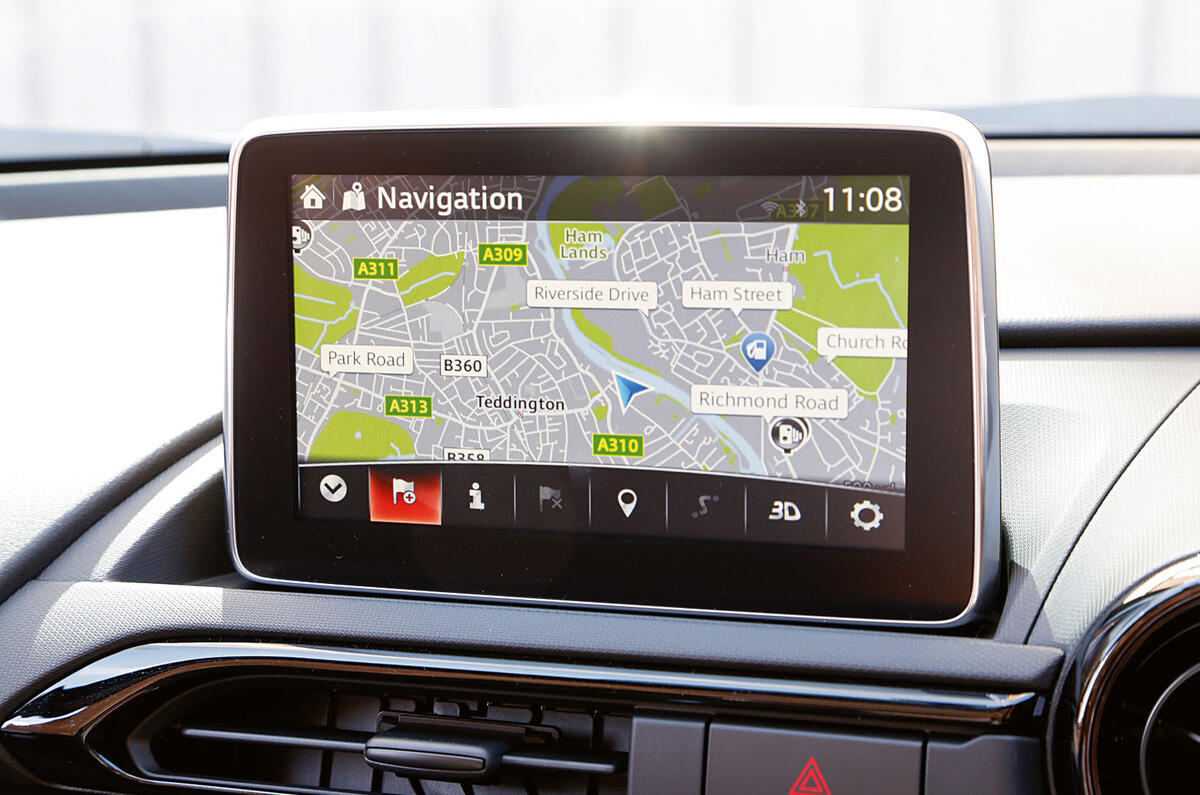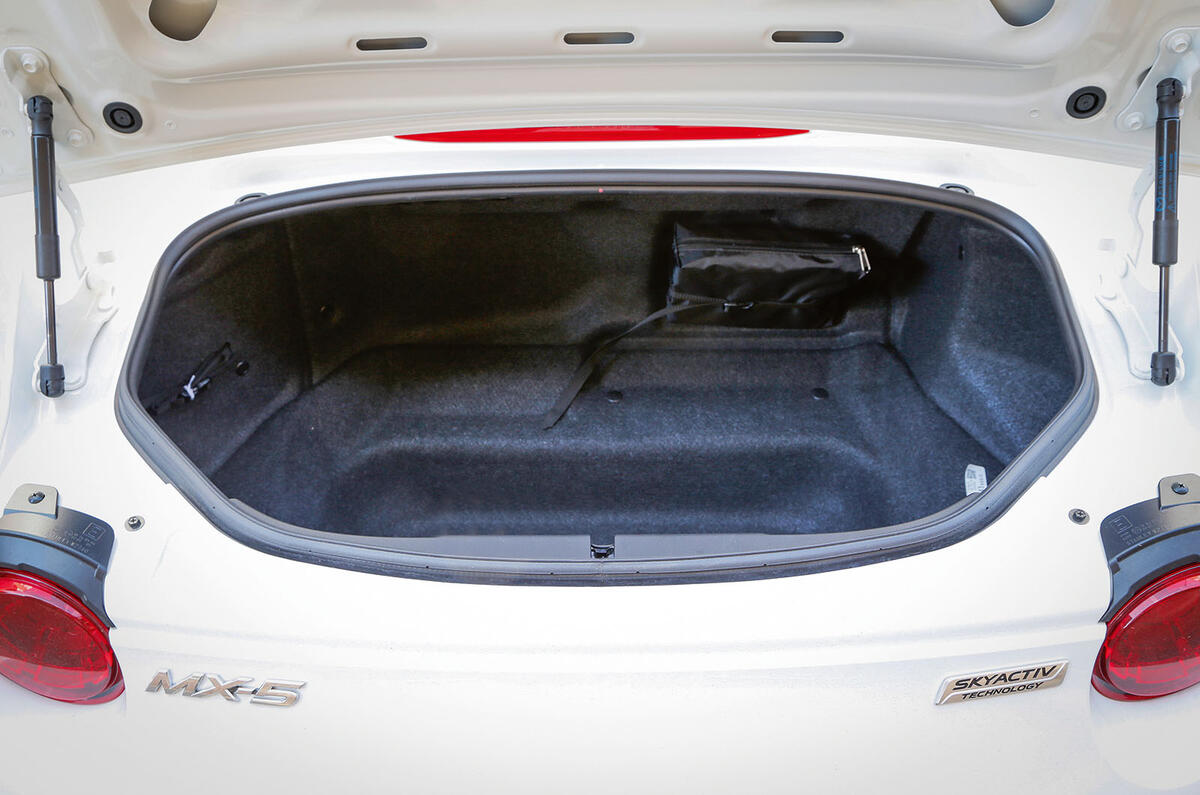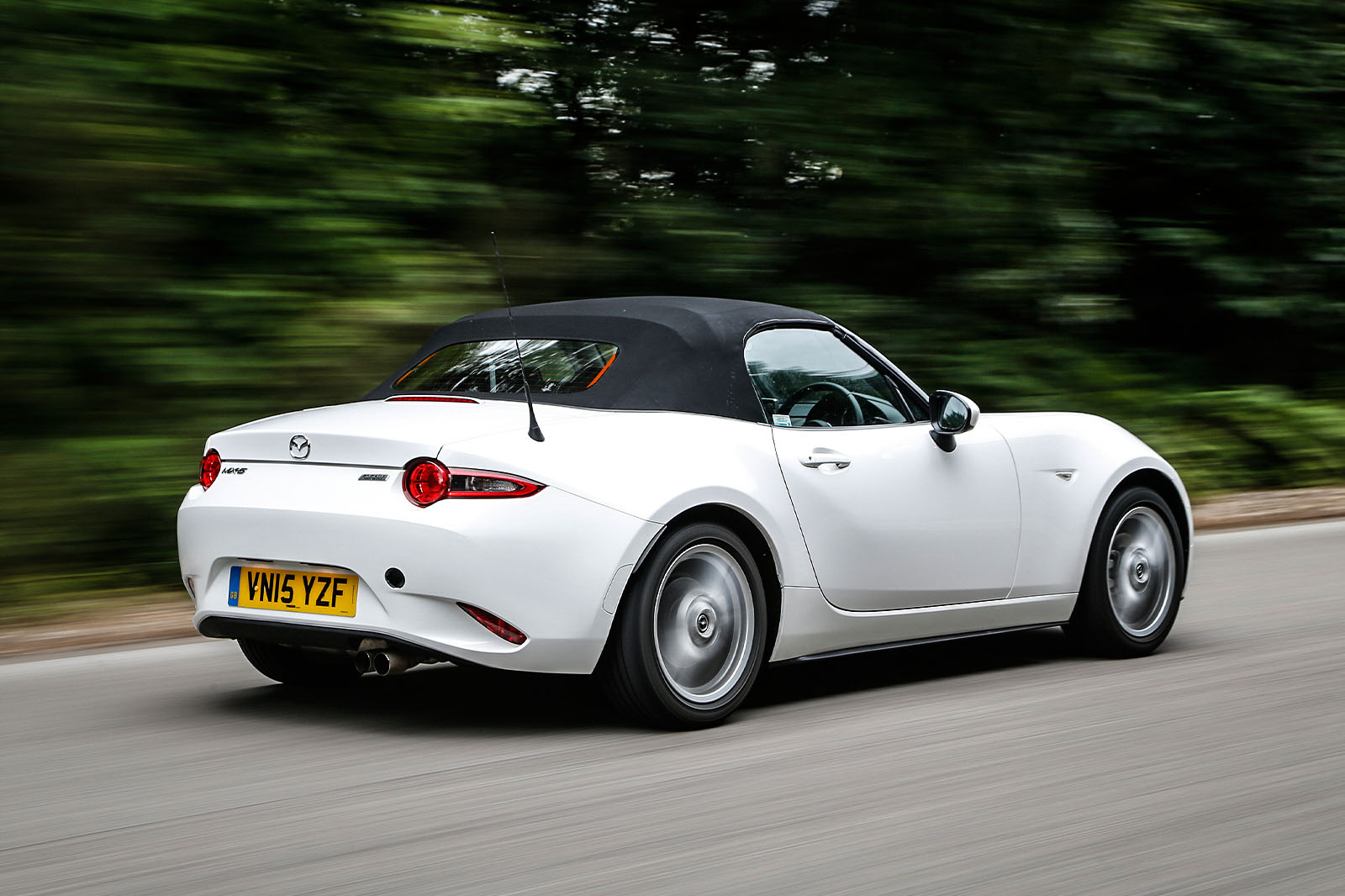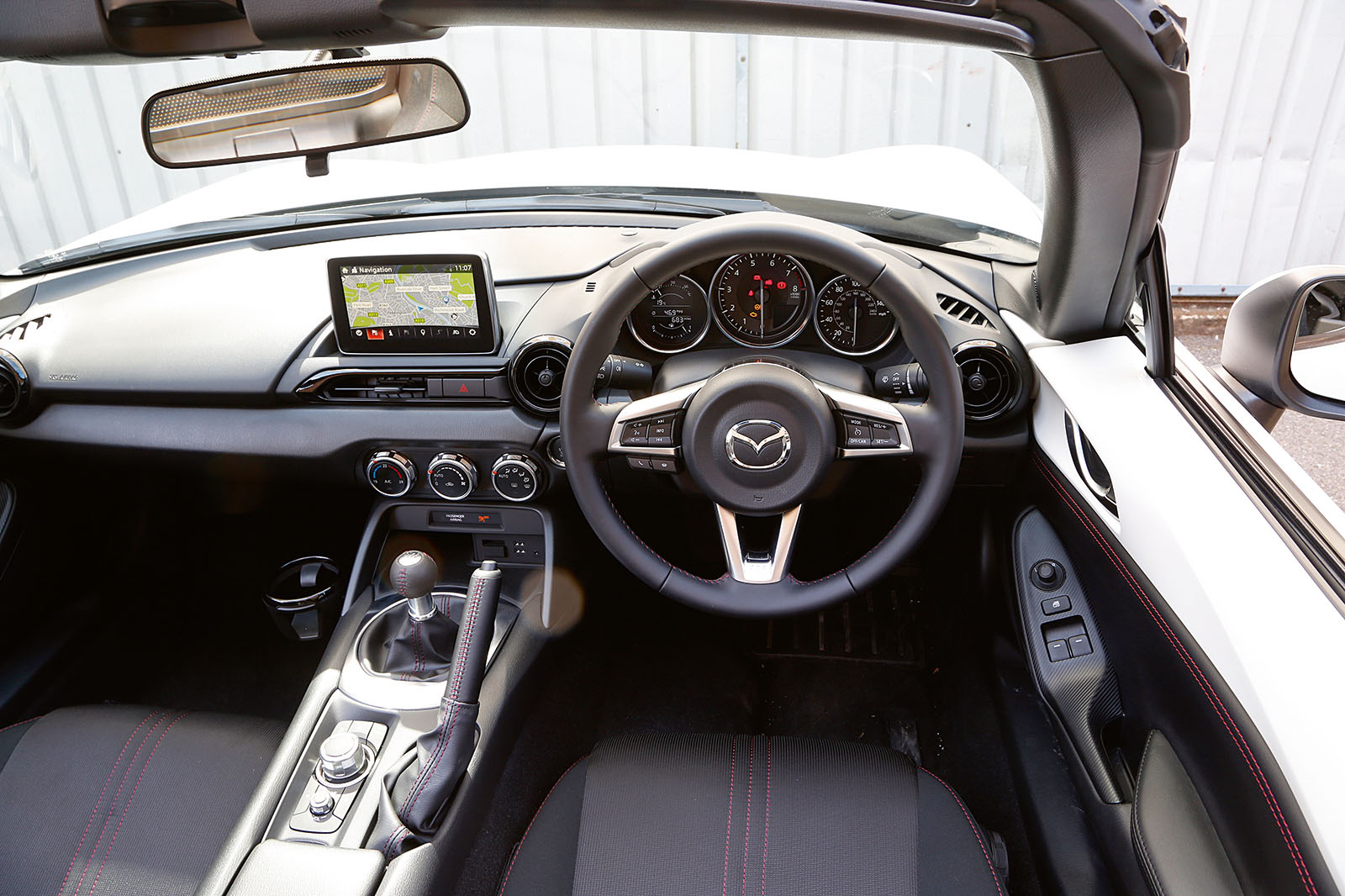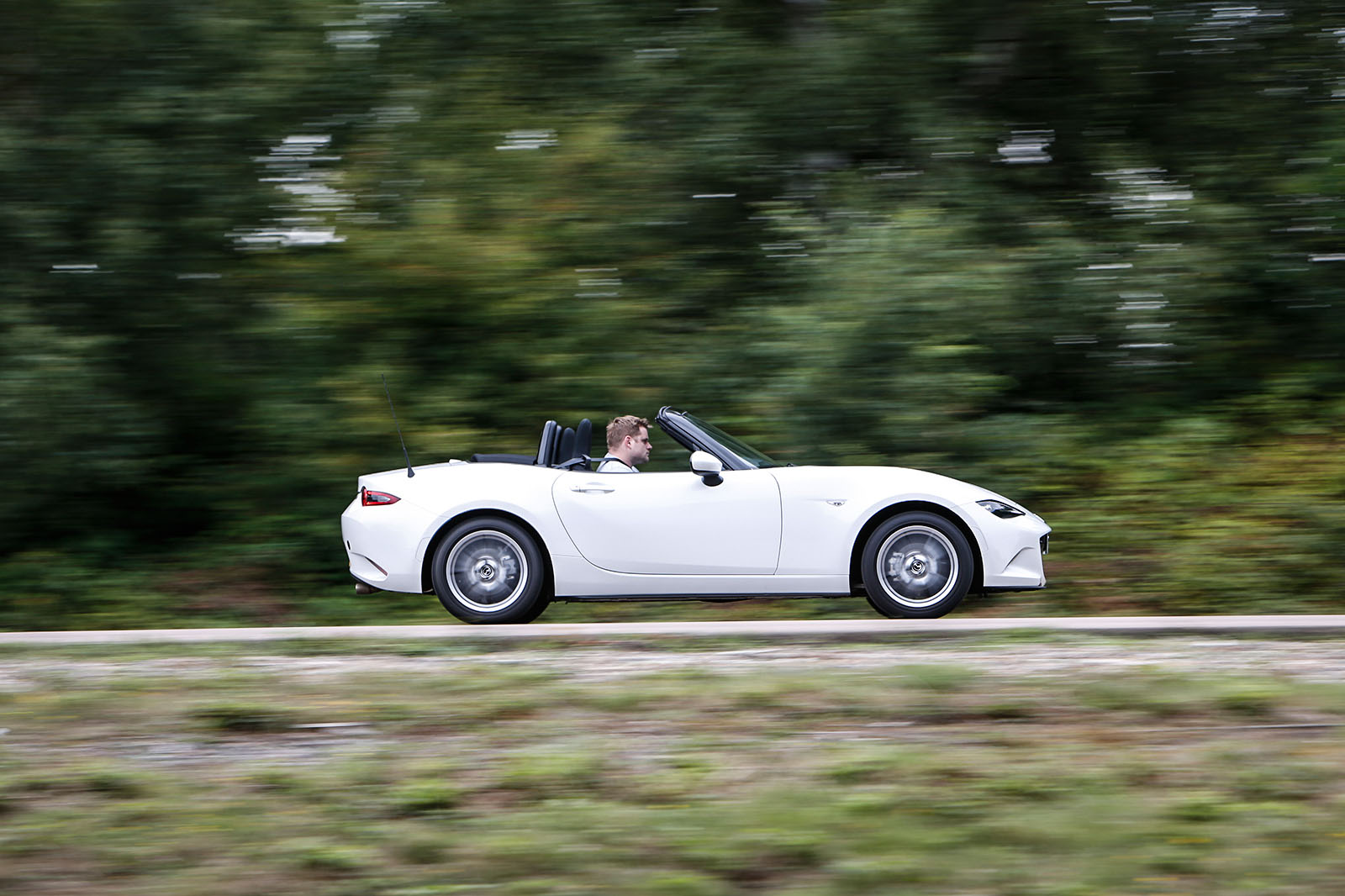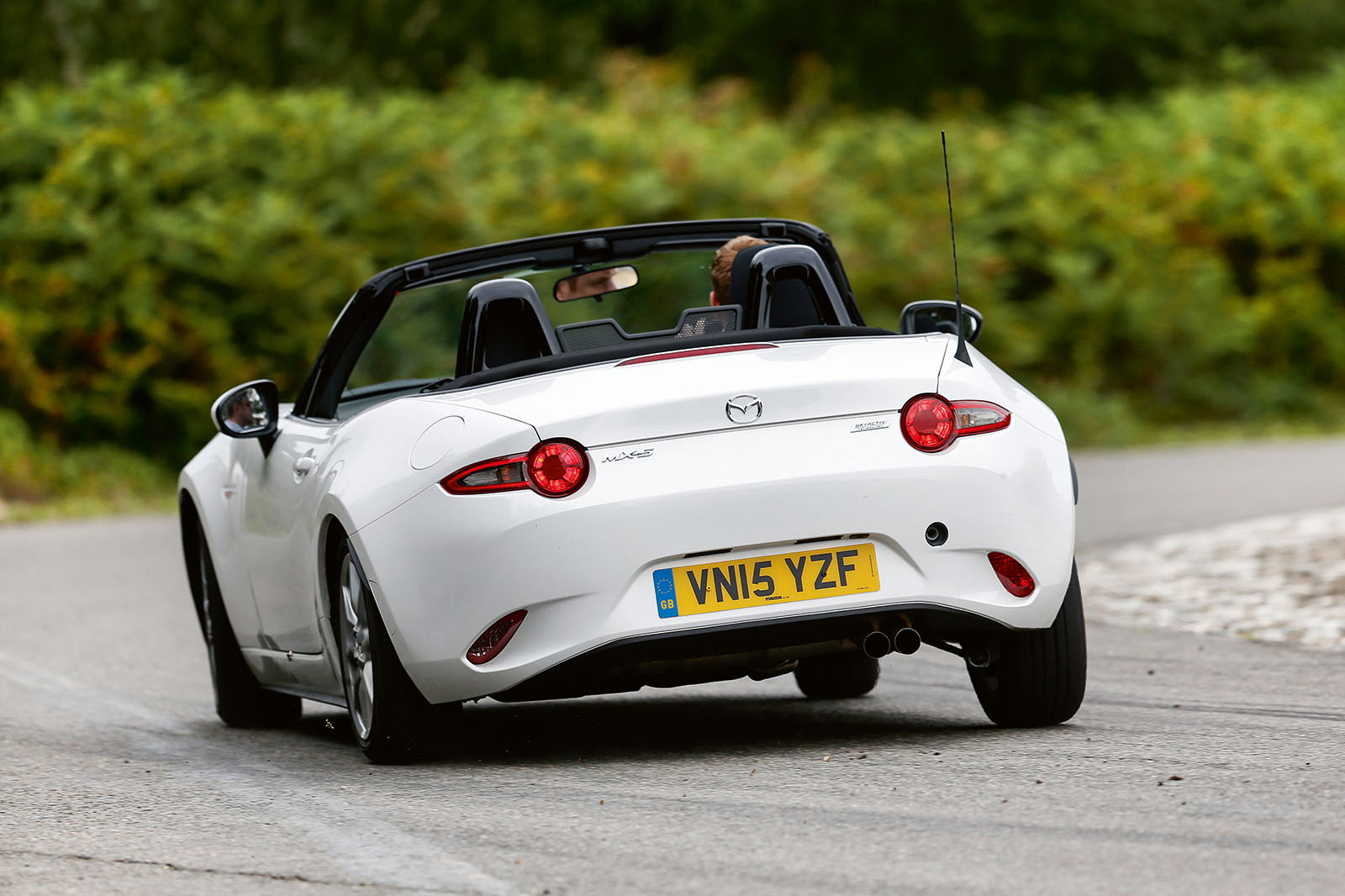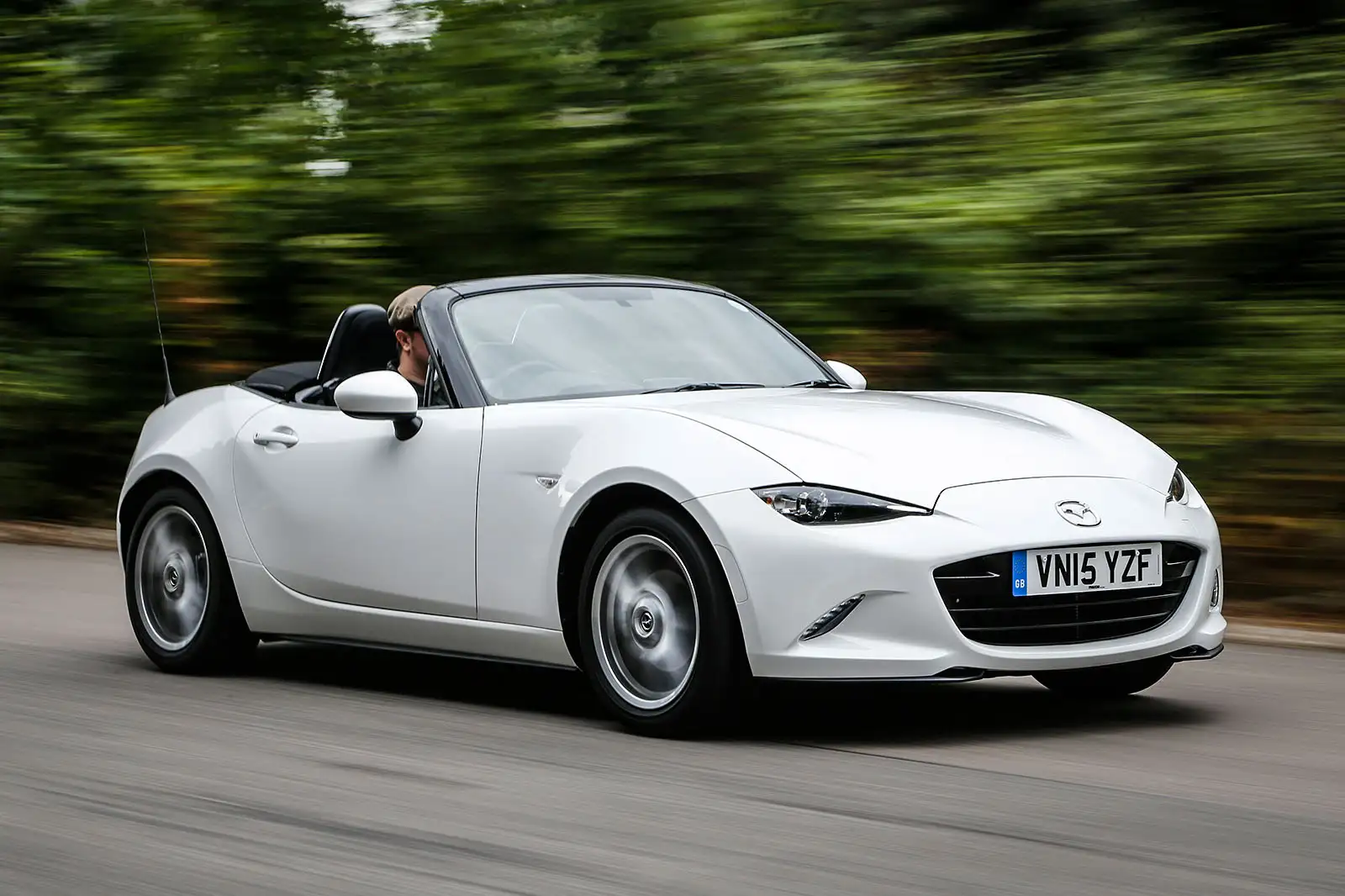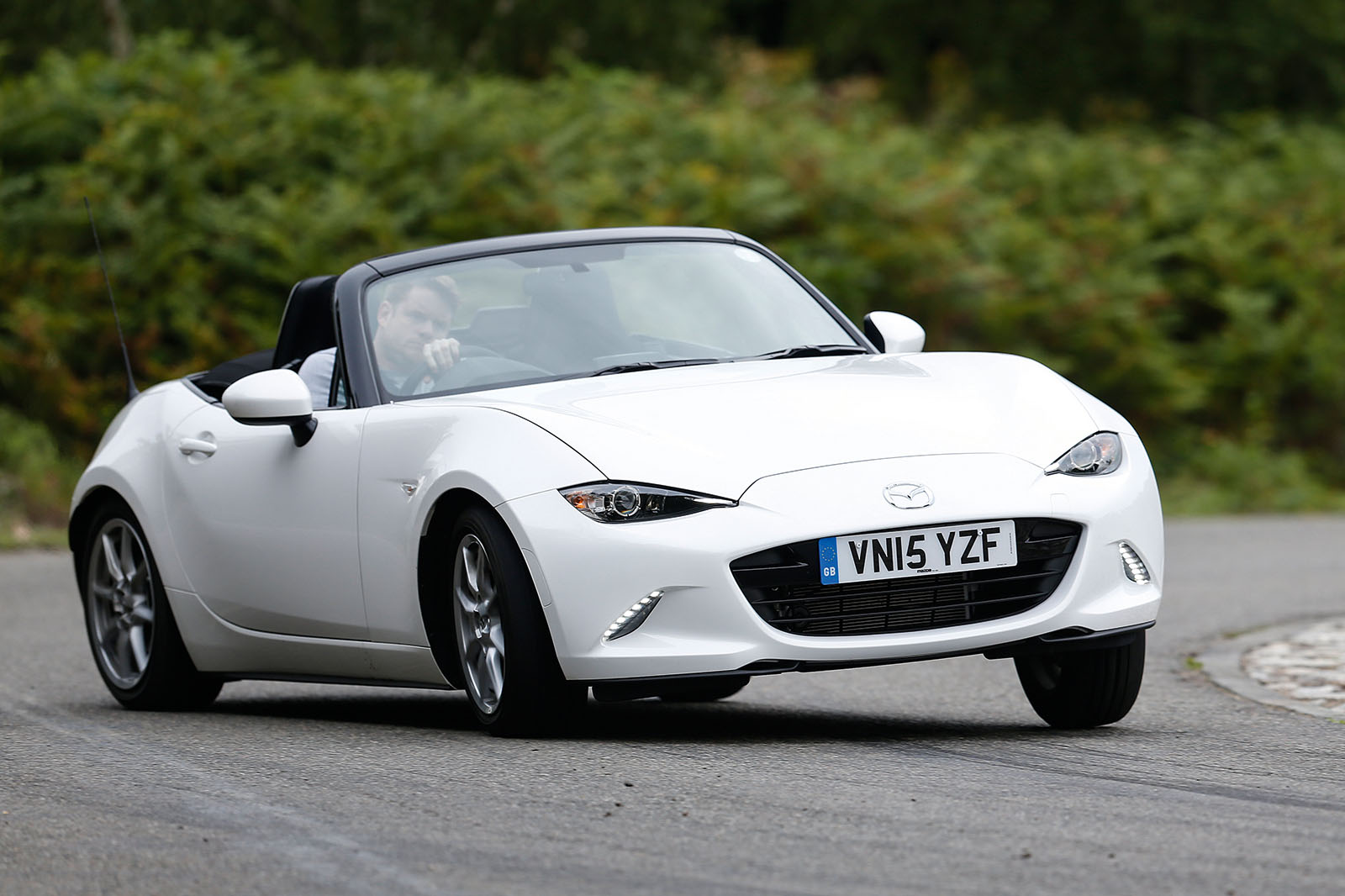For those familiar with the Mazda MX-5, the new interior ought to impress – not least by virtue of its freshness. The dashboard architecture is similar to that of the Mazda 2, which is a good thing because the same natty design features and chunky, tactile switchgear work equally well here in the roadster.
If you’re unaccustomed to MX-5s, it’s likely that the cabin’s incredibly compact dimensions will need to sink in before you can meaningfully survey the details. The MX-5 has always been resolutely bijou, and this new car is no different.
Broader adults will find themselves in frequent contact with the centre console, door trim and the sides of the skinny footwell, along with the floorpan bulge that denies you the option of folding your clutch leg away on motorways (a malaise of right-hand-drive cars only).
Moreover, despite a 20mm lower hip point, you sit a little higher than would seem optimal, and the steering wheel still doesn’t adjust for reach.
These factors can combine to make it tricky to get comfortable – tricky enough, in fact, for some people to be put off the prospect entirely, although others will proclaim this the most comfortable MX-5 yet.
More fool the critics, though, because in an age that tends towards profligacy, the MX-5’s cockpit-sized simplicity – once reconciled with – makes for a charming environment.
Nowhere is this better encapsulated than in the manually operated roof. Made 3kg lighter than before and requiring 30lb ft less effort to close, the hood can be operated easily with one hand, even when moving. There’s one spring-loaded clip to unfasten on the header rail, then a click somewhere in the housing behind you to confirm that it’s safely stowed. It takes four or five seconds and, like pretty much everything else about the MX-5, puts everything larger, heavier and motor-driven to shame.
The roof’s tiny size means that the car continues to offer a modest-sized but usable boot. It’s too small for golf clubs but is just big enough for two weekend-away bags. Which seems to us exactly as it should be.
There are four trim levels to choose from to deck your MX-5 out in - SE, SE-L Nav, Sport Nav and Icon. The entry-level SE model comes with air conditioning, LED headlights, an USB port and 16in alloy wheels. Upgrade to SE-L Nav and the MX-5 gains climate control, cruise control, a 7.0in touchscreen infotainment system with sat nav, map update, DAB and Bluetooth, and two headrest speakers.
The range-topping Sport Nav models come with keyless entry, adaptive headlights, rear parking sensors, a Bose sound system and a black leather upholstery, while the limited edition Icon MX-5's get Mazda's Soul Red details, graphics and trim, heated seats and body colour interior trim.
Finally the Z-Sport edition, limited to just 300 UK examples, swaps the standard wheels for 17in black BBS alloys, adds a cherry red fabric roof, and includes the usually optional Machine Grey metallic paint and sand leather seats as standard.


